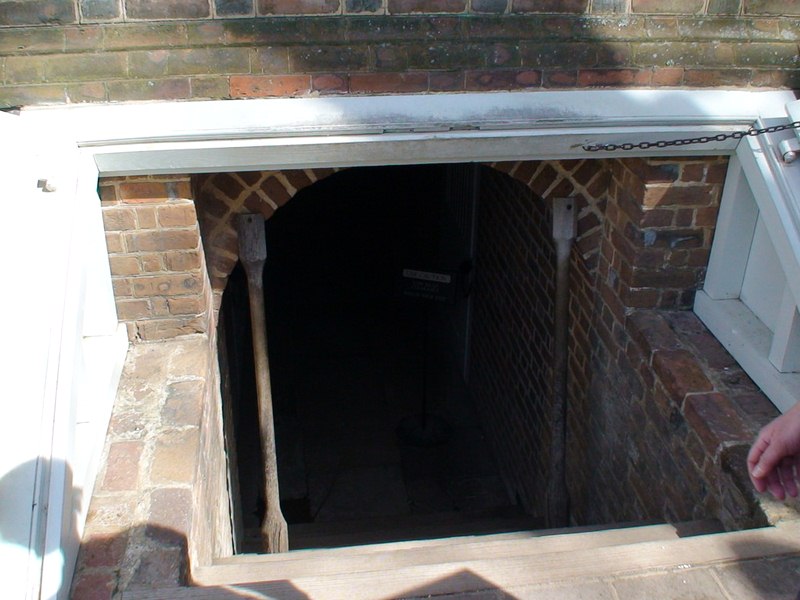Bulkhead doors and cellar doors serve as external entry points into a home’s basement. Installing one can be a significant project, which involves various costs depending on whether you’re replacing an existing bulkhead door or installing a new one. This guide will help you understand the process, anticipated costs, and critical considerations when installing a bulkhead door.
What Does It Cost to Install a Bulkhead Door for Your Basement?
The cost of installing or replacing a bulkhead door can vary greatly. To ensure you’re comparing similar services, consider what each contractor’s estimate includes. Remember that the installation of bulkhead doors differs significantly from regular interior doors; for instance, unlike interior doors, bulkhead doors don’t require caulking.
A Glimpse Into Bulkhead Doors
Bulkhead doors provide access to the cellar and remain popular in both new constructions and older homes. While older homes may require the replacement of aging bulkhead doors, newer homes often install indoor stairways alongside these doors rather than limiting access from the outside only.
The cost to install a new bulkhead door depends largely on whether it’s a replacement or a completely new installation.
A Comprehensive Guide to New Bulkhead Door Installation: Key Steps and Potential Costs
The journey of installing a new bulkhead door may seem daunting, involving multiple stages and possibly numerous contractors. However, equipped with the right knowledge, physical ability, and necessary permits from local authorities, this project can be successfully carried out by yourself. Here’s a step-by-step breakdown of the process along with associated costs.
1. Excavation: The Groundwork Phase
The first step is the excavation outside your basement wall where the bulkhead will be installed. This critical phase may consist of installing precast concrete stairs with sides or constructing concrete forms for both walls and stairs. The cost of excavation hinges on various factors such as contractor rates, the equipment necessary for the job, and ease of access to the site. Typically, using standard excavating machinery for this task takes about 3-4 hours, costing anywhere between $400 to $1,000.
2. Concrete Cutting: Making Way for Your Bulkhead
Once the excavation is complete, you’ll need to cut through the concrete where your new bulkhead door will sit. This process generally incurs a cost of around $500. Additional expenses may come in the form of breaking up ($100 to $200) and hauling away the concrete ($100 to $200).
Pro-Tip: To save some money during this stage, ask your excavator to dig an extra 15-20 inches deep. Then you can push the cut slab into this additional space instead of breaking it up and removing it, therefore bypassing these extra costs.
3. Bulkhead Installation: Laying Down Your Foundation
With your site ready and waiting, it’s time to install the bulkhead itself. Opting for a new precast bulkhead with stairs typically ranges from $1,000 to $1,500 – including installation charges. Be aware, this part of the process often necessitates heavy equipment. Alternatively, you can make a substantial saving by building the bulkhead using concrete blocks and pouring concrete steps yourself, or by hiring a mason to do so.
4. Door Installation: The Final Touch
The last piece of the puzzle is installing the doors. The price of this step can fluctuate significantly based on factors such as the manufacturer, chosen model, and any additional accessories. You can expect to pay anywhere from $600 to over $2,000 for the doors alone. Keep in mind that installation services usually add about 40% to the overall door cost.
By understanding these key steps and the potential costs involved in installing a new bulkhead door, you’re well-equipped to undertake this project with confidence and efficiency. Remember, it’s all about planning ahead and making well-informed decisions along the way.
Replacing Existing Bulkhead Doors: An In-Depth Look

When it comes to replacing an existing bulkhead door, there are several important factors to consider. First and foremost, you need to evaluate the current state of your bulkhead structure.
Assessing the Condition of Your Bulkhead
The condition assessment is crucial because if the bulkhead is deteriorating or showing signs of major wear and tear, you might need to consider replacing the entire structure. This could include the stairs, enclosing walls, and base. On the other hand, if the bulkhead is still robust and only the door is damaged or outdated, you can focus on door replacement.
Cost Factors
The cost of replacing a bulkhead and door together is similar to that of installing a new one, except for one significant difference – there would be no concrete-cutting charges involved as the space for installation already exists.
If you’re replacing only the doors, you should budget for costs ranging from $600 to $2,000. This price range depends on factors such as:
- The quality and durability of materials used
- The complexity of design
- The manufacturer’s reputation
In addition to these costs, bear in mind that you’ll need to add roughly 40-45% more for removing the old doors and installing new ones. This percentage may fluctuate based on your contractor’s rates or any additional services required during installation.
Benefits: Protection against External Elements
While investing in new bulkhead doors might seem like a significant expenditure initially, remember that these modern models provide far superior protection against external elements like rain, snow, wind, and even potential intruders compared to older models. They often feature better insulation as well, which can help in reducing energy costs in the long run.
Budget Management Tips
Managing a renovation project budget effectively requires careful planning. Here are some tips to keep in mind:
- Compare Contractors: Don’t settle for the first contractor you meet. Obtain quotes from multiple professionals to ensure you’re getting a competitive rate.
- Secure Written Estimates: Always insist on written estimates to avoid unexpected charges.
- Prioritize Essential Purchases: Be clear about your needs and wants. Prioritizing essential purchases will help prevent unnecessary spending.
By keeping these factors in mind, you can successfully navigate the process of replacing bulkhead doors while ensuring quality, efficiency, and cost-effectiveness.
Summary
The process of installing or replacing an exterior basement door, or bulkhead door, involves significant costs and steps. This can be influenced by whether you’re replacing an existing door or installing a new one. Bulkhead doors, which provide access to the cellar, are common in both new constructions and older homes. The cost depends largely on whether it’s a replacement or a new installation. To install a new bulkhead door, one must undergo multiple steps such as excavation which consists of installing precast concrete stairs with sides or constructing concrete forms for both walls and stairs. Factors that influence the cost of excavation include contractor rates, necessary equipment, and site access ease.
Conclusion
In conclusion, the installation of a new bulkhead door is an intricate process that involves several steps, with excavation being the most significant. The cost of this procedure is highly dependent on a variety of factors, including the contractor’s rates, necessary equipment, and the accessibility of the site. Therefore, it’s crucial to consider these elements when planning for a new bulkhead door installation to ensure you accommodate all potential expenses in your budget.
FAQs (Frequently Asked Questions)
The cost of installing or replacing a bulkhead door can vary depending on factors such as the size of the door, materials used, labor costs, and any additional features or customizations.
The key steps involved in the installation of a new bulkhead door include excavation, concrete cutting, bulkhead installation, and door installation. Each step is crucial to ensure a successful installation.
The condition assessment is crucial because if the bulkhead structure is damaged or compromised, it may require additional repairs or reinforcement before a new door can be installed. This assessment helps in determining the overall scope of the replacement project.
Managing a renovation project budget effectively requires careful planning, obtaining multiple quotes from contractors, setting aside a contingency fund for unforeseen expenses, and prioritizing essential features to stay within budget while achieving desired results.
New bulkhead doors protect external elements such as rain, snow, and debris by creating a secure and weatherproof barrier between the cellar or basement and the outdoor environment. This helps in maintaining a dry and safe interior space.
The final touch of installing the doors is crucial as it ensures that the entire structure is properly sealed and secured. It also contributes to the aesthetic appeal and functionality of the doors, providing easy access to the cellar or basement.











1 comment
Looking for an estimate to tear out and replace bulkhead and stairs, with new stairs and bulkhead doors etc